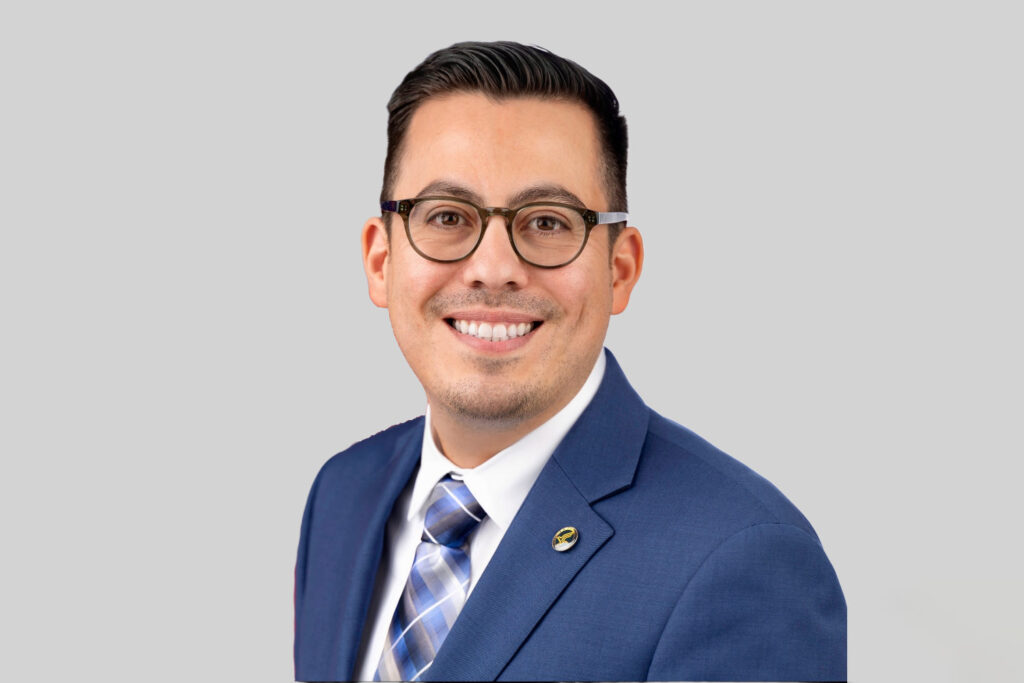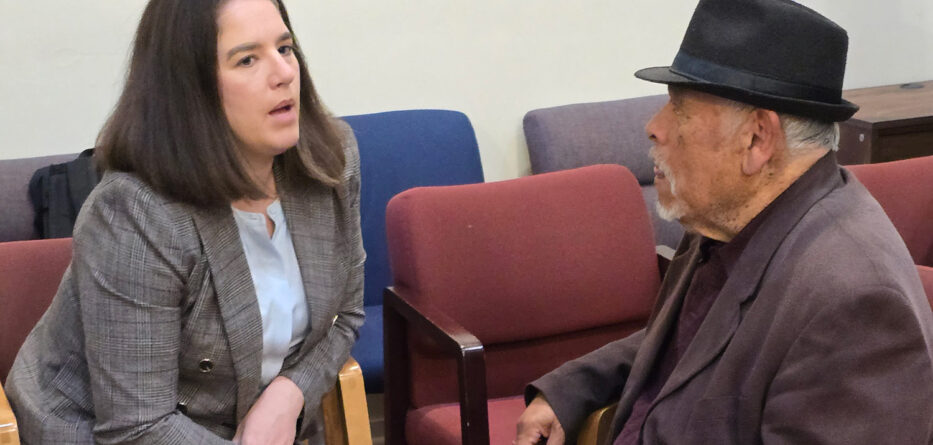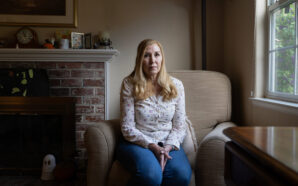Arturo Hilario
El Observador
On Thursday November 6 Covered California and Local Latino leaders came together at the Instituto Familiar de la Raza in the Mission District of San Francisco to host an Open Enrollment Latino Roundtable Conversation that had the goal of strengthening community partnerships, taking a ‘Connector Pledge’ to inform and encourage community members to enroll in healthcare through the open enrollment period, and sharing the latest enrollment data and eligibility updates.
The open enrollment is going on from now until January 31, but in order to get coverage that starts on January 1, 2026, enrollees must have chosen a plan by December 31.
In that time before the deadlines families and single enrollees are encouraged to do their due diligence and connect with not only Covered California for information on the who’s and what’s of open enrollment, but their own local community organizations that are there to serve and inform as well.
At the roundtable, several local organizations posed important questions to the top Covered California leadership in attendance. This included Executive Director of Covered California Jessica Altman and Deputy Director, Policy, Research & External Affairs for Covered California Dr. Jeffrey Reynoso, DrPH, MPH.
This meeting was meant to strengthen the local community connections by informing local leaders in on any updates and they can pass on to the neighborhoods they serve and discuss strategies to encourage eligible Latinos to enroll before the January 31, 2026 deadline.
Media had the opportunity to speak with them after the closed door discussion amongst the community leaders and find out what they are doing to be as straightforward as possible during the uncertainty of the Trump administration and lack of clarity on funding for healthcare moving forward.
Can you touch on what was discussed today and what the importance is of having this ‘Connector Pledge’ now as there’s a lot of tension with Covered California and the federal government?
Jessica Altman: We’re here to talk about who Covered California is, what we do, how can we be of service to the San Francisco and Bay Area communities. We’re in open enrollment, so this is the time when Californians can come, explore their options and enroll. And we talked a lot about how we can support Californians, and really understanding their options. The pledge is really about just recognizing the community partnership, the collective energy that it takes to do this work and do this work well. What I find inspiring about California is in these moments where things are hard and there’s uncertainty.
The reaction is to say, “What the heck can I do about it and get to work.” And I think that’s the tone of the conversation and that recognition that our organizations are different, but our goals are aligned, and how can we do that work together?
Despite what is going on federally, what do you hope people take away from knowing that there are steps they can take to get informed, and sign up for insurance, and that you are there as a resource to help people sign up?
Jessica Altman: So Covered California, obviously, has been in the headlines at the center of this government shutdown and questions about how generous the tax credits that we provide to make health insurance affordable for California will be as we head into 2026.
What I want people to know is Covered California is here for you. We’re fighting for you. And in this moment, our goal is to be a source of truth. It’s really important this year more than ever that Californians be empowered with information and understand what is changing, what could change if Congress acts, but also what does that mean for your individual circumstance?

Local Leaders and Covered California’s Executive Director Jessica Altman Discussed Enhanced Tax Subsidies, Latest Enrollment Updates, and Taking a Pledge To Help Latino Enrollees Despite the Federal Government’s Indifference to Healthcare Costs
What does that mean for the cost of your health Cover California is still going to be the most affordable place for health insurance for most of our enrollees and people that need us. We are still going to be offering tax credits, even if they’re less generous to the vast majority of people that we cover.
And many of our enrollees have more affordable options available to them if they shop. We’re here to help. You can call us, you can do it online, but we also have over 14,000 enrollment partners in community, CBOs, in insurance agents who are in your community, in your language, and just stand ready at no cost to you to help you get through this mire. It is complicated, and we want to help people navigate.
Could you tell me a little bit about your role as Deputy Director, Policy Research, & External Affairs?
Dr. Jeffrey Reynoso: I currently serve as the Senior Advisor for Policy Strategy and Community Engagement at Cover California. I know it’s a long title, but basically, I’m supporting the executive director and their team on how to better reach communities that Covered California hasn’t yet reached, in particular, the Latino and the Latina community in California.
Our executive director, Jessica Altman, likes to say, “We want to find every nook and cranny of the state and find folks that Cover California hasn’t reached.” So some of the data of why this is important, the UCLA Center for Health Policy Research put out some data around who’s eligible for financial help in the state of California. And what the data showed was there’s still about 1. 2 million Californians that qualify for either Medi-Cal or Cover California. Within Cover California, there’s about 508,000 folks that are eligible for Cover California and are currently enrolled. And what that represents is about 57% Latinos. So we know that there’s still a lot of need out there, but communities aren’t necessarily connected to the information so they can make a decision.
Have you seen any big changes in terms of enrollment since the administration change? Have you seen any huge difference in how much people are enrolling and how much information people are seeking out, especially in the Latino communities?
Dr. Jeffrey Reynoso: Yeah, that’s a great question. Let me just take a step back and talk about where we’ve been. So as of 2020, to the last open enrollment period for 2025, there was a 43% increase in the amount of Latino Californians enrolled under Cover California. So that was a significant increase.
And the reason for that increase was is during the pandemic, Congress passed these enhanced tax subsidies, so it made plans on the Cover California marketplace more affordable. So something like four out of five consumers could find a plan for $10 a month or less for their monthly premium costs.
The question around, have we seen changes currently with this administration? Well, we’re in the middle of it now. This is the first open enrollment period under the new federal administration. We won’t know the numbers until the end of open enrollment, the end of January 31st in 2026. But what I will say is that we’re projected If the expanded or the enhanced tax subsidies do not continue past December 31st of this year, and Congress doesn’t have to extend those beyond that period So the projections are that for Latino families, there will be a 122 % increase in the cost of their monthly premiums.
So that’s pretty significant. You think about a family that’s trying to make ends meet, paying rent, paying food. If you’re increasing their monthly costs by $97 per month, which is the average that we’re expected to see an increase per month for a Latino family, $97 a month, that’s pretty significant. It’s possible that some families may elect not to enroll in coverage.
And that’s one of the And I think one of the reasons why we launched this “Connectors for Coverage” campaign. We are going to key regions throughout the state of California to have these community roundtable discussions and connect with community leaders in the Asian-American and Native, Hawaiian, and Pacific Islander community, in the Black African-American community, and in the Latino-Hispanic community, and being able to connect in a way that is building on trusted partnership and trusted relationships. It’s these two-way conversations that we think are going to help us mitigate the negative impacts of what’s happening at a federal level. We recognize as Covered California that there’s a lot of fear and uncertainty in the Latino and broader immigrant communities. And these conversations are what we think is going to help us ensure that those that are eligible for coverage apply or those who currently have coverage reapply for the health insurance.
What is your hope with connecting with these community leaders and community itself in order to mitigate how gray this area is right now in terms of, is there going to be credits or not, and helping families navigate this uncertain time?
Dr. Jeffrey Reynoso: The goal of having these community conversations with community-based organizations, left and the leaders, is really to listen first and hear what are the questions that they’re getting from community, and being able to provide them with the resources that they need to have those conversations. Today, during the roundtable discussion, we had a great example of an organization that needed a talking points and just a one-pager fact sheet. We can provide that. So listening what the needs are from the community leaders, we’re able to share our resources so that they’re resourced to then resource the community. On the ground level with their local community.
Is there anything else you’d like to add about what’s going on here with Cover California and why people should reach out to the communities and get this information that you guys are sharing with local community organizations?
Dr. Jeffrey Reynoso: In particular for the Latino and the Latina community here in California, we have invested in over 14,000 certified enrollment counselors or sisters and community-based organizations that are across the state. Many of those organizations provide services in English, in Spanish, and other languages.
So the message is that Cover California is here to connect the community to coverage, and we want them to know that they can call one of our 14,000 certified sisters or community-based organizations at 1-800-300-0213, or they can visit coveredca.com/Spanish for information in Spanish.
Photo Caption: Dr. Jeffrey Reynoso, DrPH, MPH is the Deputy Director, Policy, Research & External Affairs with Covered California. Photo Credit: publichealth.sdsu.edu
Pullquote: “What I want people to know is Covered California is here for you. We’re fighting for you. And in this moment, our goal is to be a source of truth. It’s really important this year more than ever that Californians be empowered with information and understand what is changing”
-Jessica Altman – Executive Director, Covered California





